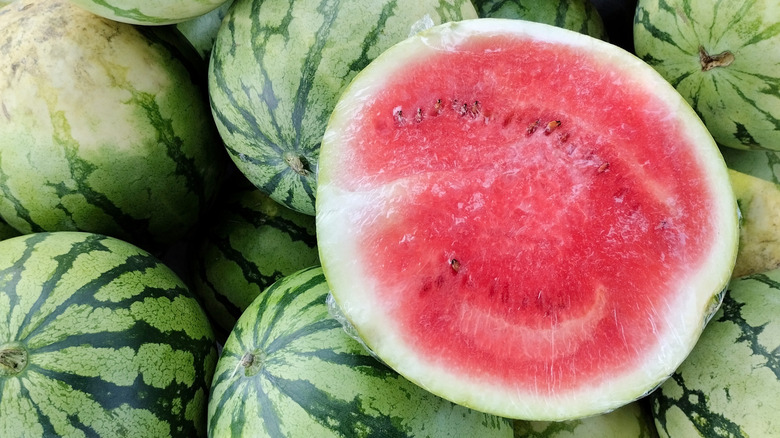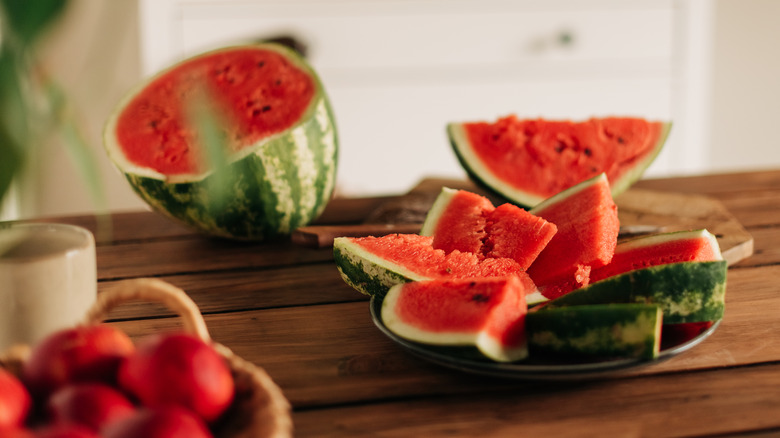The Watermelon Myth You Have To Stop Believing
It's summer, exactly in the middle of watermelon season. And it's indeed the season to be slicing up watermelons (or cubing them; you've got lots of watermelon-cutting methods) and having a cool, refreshing fruit to bite into whenever it gets too hot outside. If you've been checking social media for tips on how to choose a fresh melon, though, you may have been subjected to watermelon misinformation: the idea that there are male or female watermelons that look and taste different.
In the internet's wide-ranging stew of dubious information and rumors, every now and then, you might see a claim going around that you can spot male watermelons that are longer-shaped and more tasteless and watery. Meanwhile, female watermelons are larger, rounder, and taste more sweet. However, despite this information spreading online, none of it is remotely true: we use the terms "male" and "female" to refer to different parts of a plant. Watermelon plants contain both of those parts, which means that every watermelon is technically both male and female. If someone is telling you about the sex of a watermelon, tell them that watermelons do not work that way.
There aren't male or female watermelons
Here's a quick botany rundown: the part of a flower that produces pollen is called a stamen, and we call this male. The part of a flower that produces seeds and fruits is called the pistil, and we call this female. Some fruits, like kiwi fruits, do have individual male or female plants, and they're called dioecious fruits. Watermelons are monoecious, a fancy word, which means every watermelon plant contains the pollen-producing and the pollen-receiving parts of a flower — both male and female.
With all that said, what should you actually look for when you're buying a watermelon at the market? A quality watermelon should be firm to the touch, and it should be heavy because of how much water a watermelon contains — it has its name for a reason. A watermelon should last a week before you cut into it, and it'll begin to dry out after that. It also helps if you can find a yellow spot on the melon's underside called a field spot or a ground spot. This yellow spot marks where the watermelon has been resting on the ground while ripening in the sun, and any ripe watermelon should have that. No need to check the underside for any other details, as male or female watermelons don't exist.

